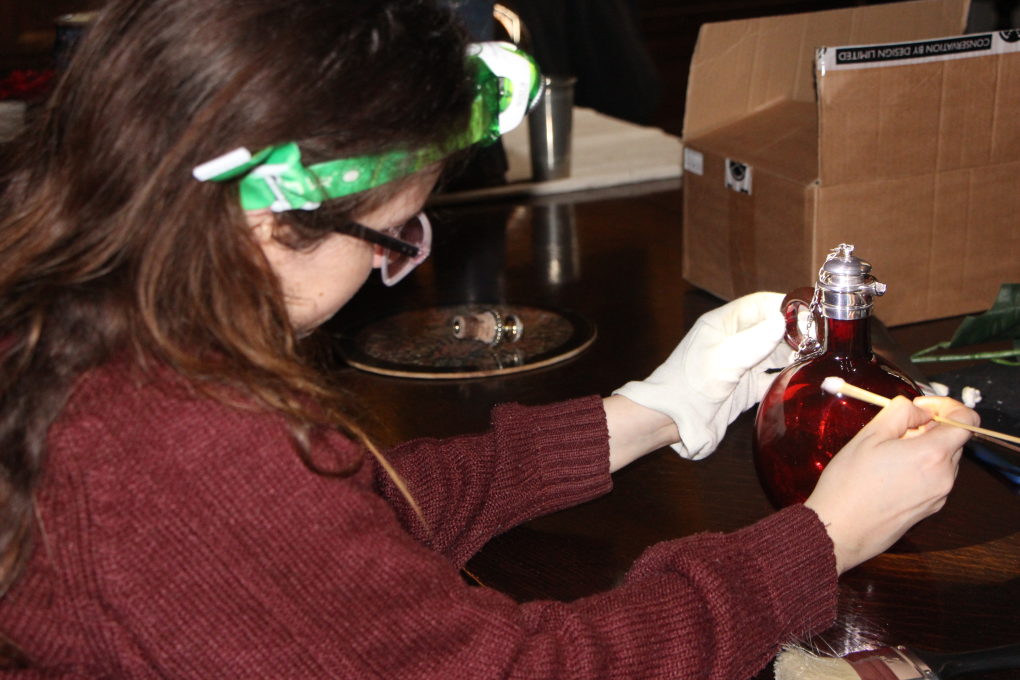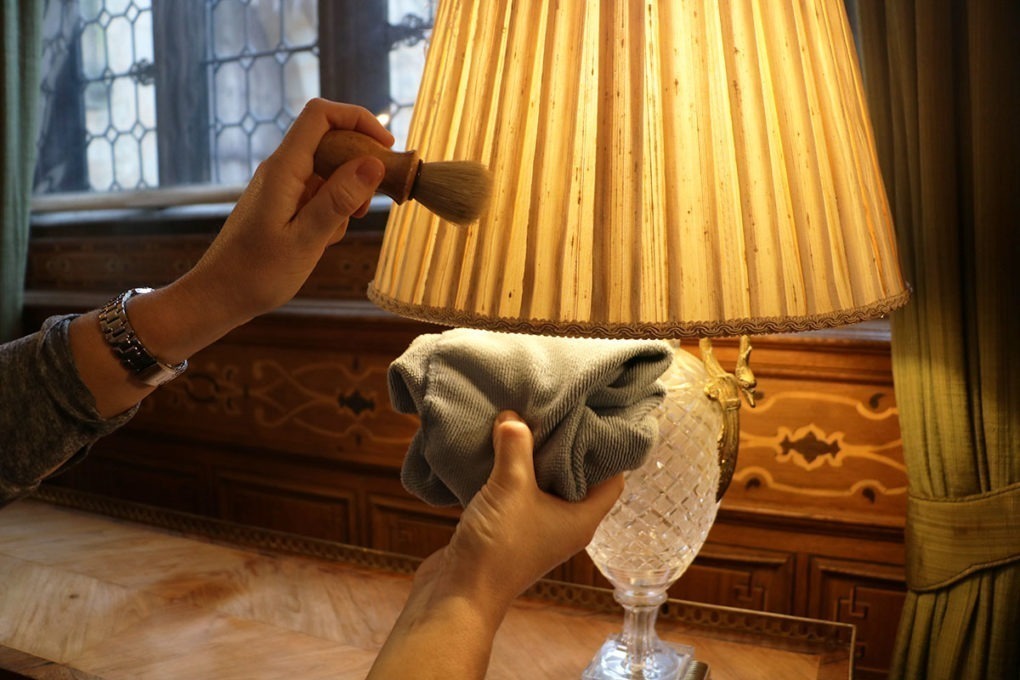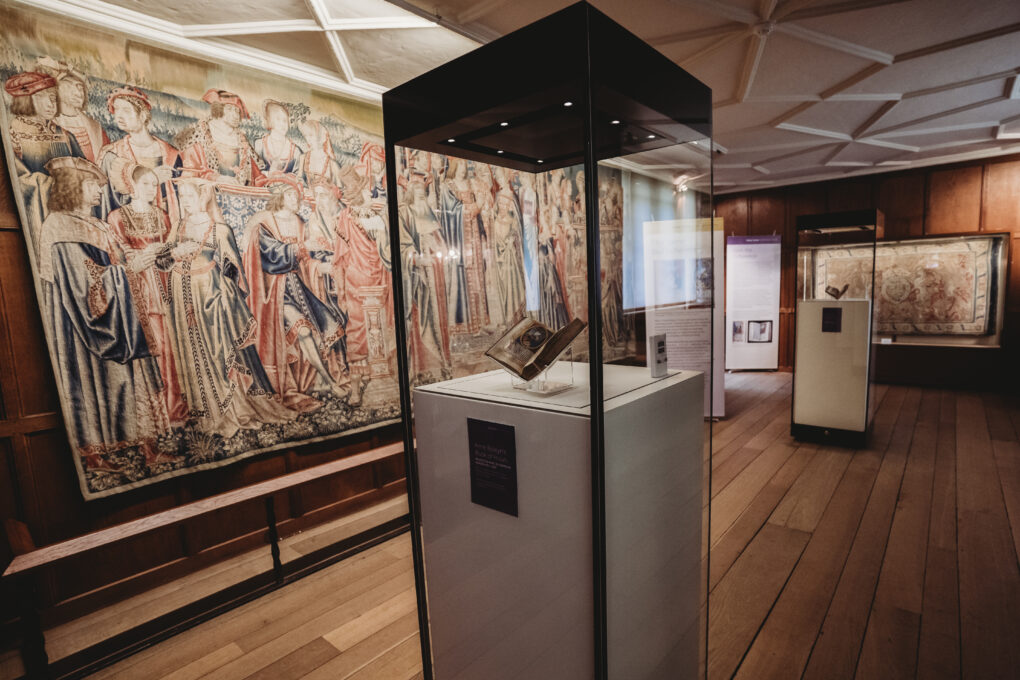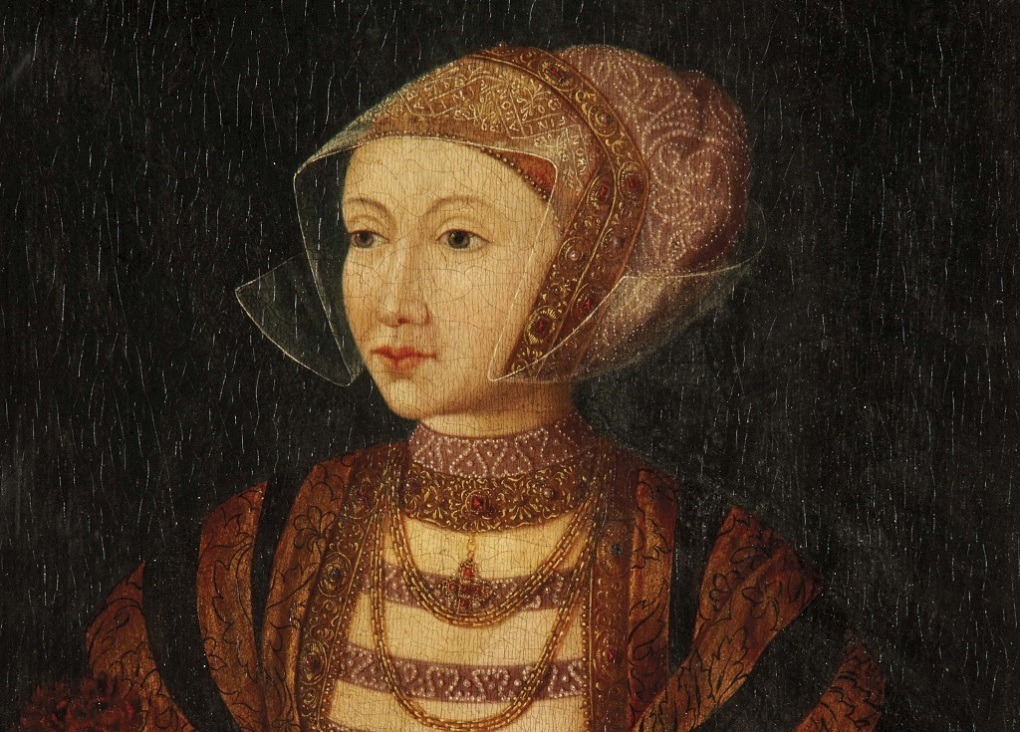
Hever Castle’s curatorial team work closely with specialists in conservation to ensure the precious collections in the Castle are preserved for future generations.
General cleaning of the Castle is done all year round, but in January when the Castle is closed to the public, mass conservation works are completed to ensure the artefacts in the Castle retain their splendour. The team work through every room in the Castle; from the large fireplaces to small jars, nothing is left out.

Preservation of the illustrated Books of Hours signed by Anne Boleyn is extremely important with the books stored behind glass, the pages regularly carefully turned to reduce fading, light levels kept low by having UV blinds in place and humidity levels checked regularly.

The portraits in the Castle are reviewed by an independent expert every three years (unless anything has been spotted in the meantime) with recommendations for priority work.

The collection at Hever Castle is vast, and also a broad spectrum of genres and mediums, so much time is spent researching pieces and updating the collection management system or imputing a condition reports.
Recent conservation projects have included:
Conservation of ‘The Yule Log’ Painting
The conservation of ‘The Yule Log’ painting which depicts numerous figures involved in the festive decoration of the Great Hall at Hever Castle.
The painting had been damaged, with scratches as well as an area of paint loss near the bottom of the canvas that needed retouching. The work was undertaken by Paintings Conservator, Francis Downing.
The painting was examined at Hever Castle and at the Studio. Internal, portable LED, and Ultra-violet lighting were used to aid inspection along with chemical testing of the surface coatings.
Conservation work involved immediate consolidation with a stable adhesive, around the areas of loss. This was followed by removal of surface dirt and discoloured varnish on the painting.
The old lining canvas and old organic glue paste adhesive were removed. The painting was then impregnated with a stable conservation adhesive in order to consolidate the paint and ground layers. This work was followed by adhering a new canvas to the reverse of the painting under gentle vacuum pressure and heat. The areas of loss were filled and retouched as necessary.
Finally the painting was re-varnished with a non-yellowing synthetic resin for future protection.
The frame was cleaned, before the painting was re-fitted with non-reflective UV protective glazing and a ‘Tyvek’ backing.
Thanks to Francis, the painting is now back on display in the Great Hall.
Book your visit to Hever Castle & Gardens.
Within the grounds of the Hever Castle Estate, there are two opportunities for you to stay the night with us.
Hever Castle has played host to many important events and celebrations for over 600 years. In 1903 when William Waldorf Astor set about restoring Hever Castle to its former glory, he added the Astor Wing, to accommodate his family and guests, before creating a lake and the spectacular Italian Garden to house his impressive collection of ancient Greek and Roman statuary.
There are multiple places to eat & drink across the Hever Castle Estate. Select between the Castle & Gardens and Golf Club below to discover more.
Set in the mature grounds of the Hever Castle Estate, Hever Castle Golf Club is a 27 hole Kent golf course that will encourage and inspire all golf enthusiasts.
Set in the mature grounds of the Hever Castle Estate, the Wellbeing Centre consists of five smart treatment rooms.